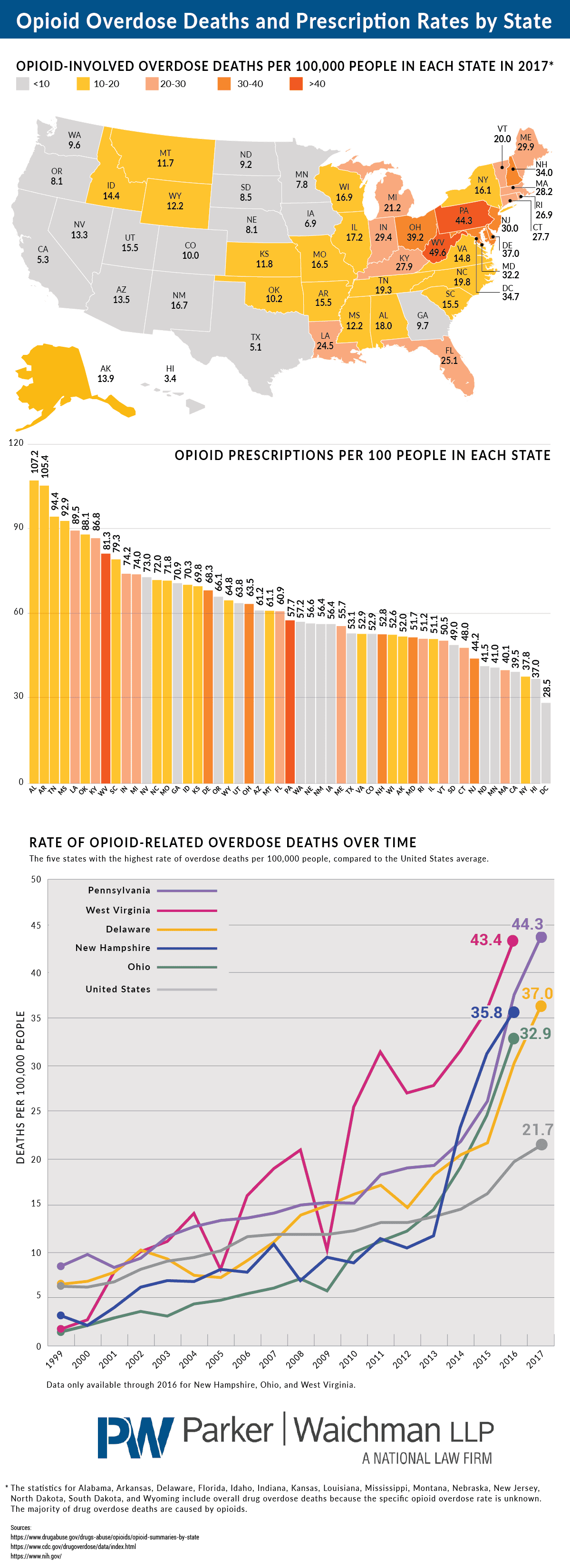
How Many People Die From Opioid Overdoses Each Year? According to the CDC, more than 70,000 people died from drug overdoses in the United States in 2017. Sixty-eight percent of those deaths involved a prescription or illegal opioid. On average, 130 Americans die every day from an opioid overdose. More than 399,000 people died from […]
According to the CDC, more than 70,000 people died from drug overdoses in the United States in 2017. Sixty-eight percent of those deaths involved a prescription or illegal opioid. On average, 130 Americans die every day from an opioid overdose. More than 399,000 people died from opioid overdoses between 1999 and 2017. This indicates that there is a major opioid epidemic in the United States that continues to grow exponentially. Opioid overdose statistics paint a somber picture; annual opioid overdose deaths have increased sixfold since 1999.
Click on the image to display at full size

Opioids are a class of drugs that include prescription opioids such as hydrocodone (Vicodin), oxycodone (OxyContin), morphine, codeine, and fentanyl. It also includes heroin and other narcotics. Part of what makes opioids addictive is that they bind to and activate opioid receptors in many areas of the brain and spinal cord, especially those involved with pain and pleasure. This blocks pain signals and releases large amounts of dopamine, a neurotransmitter that creates the same feel-good sensations we get from sex and food. Lethal opioid overdoses can occur from both prescription opioids and illegal opioids.
As of 2017, the states with the highest rates of fatal opioid overdose were:
The opioid crisis is partially fueled by the high rates of opioid prescriptions. Opioids are a key component in managing chronic and acute pain, but it is important that they are used appropriately and prescribed prudently. Providers should thoroughly discuss the risks of opioids with patients before prescribing them. While opioid prescriptions have been gradually declining over the years, the rate is still alarming. These opioid prescription statistics shed light on the current opioid crisis:
The states with the most opioid prescriptions as of 2017 were:
If you or a loved one is struggling with opioid addiction, the Substance Abuse and Mental Health Services Administration (SAMHSA) provides a wealth of resources and hotlines to offer assistance.


